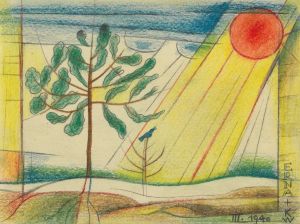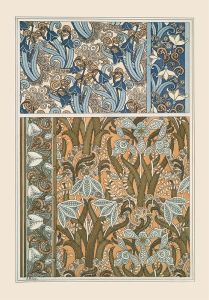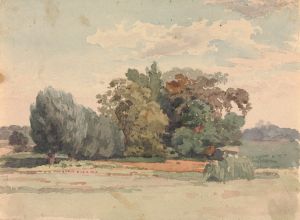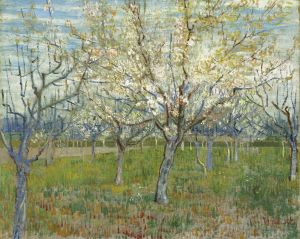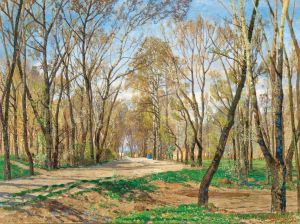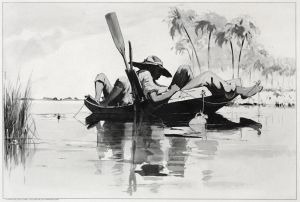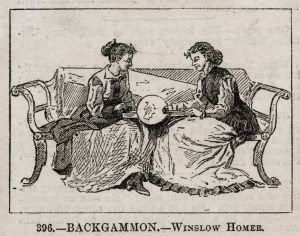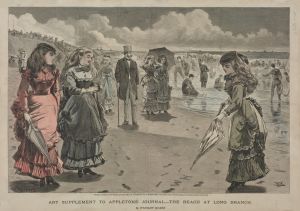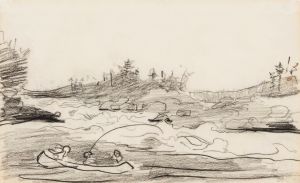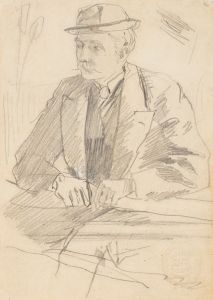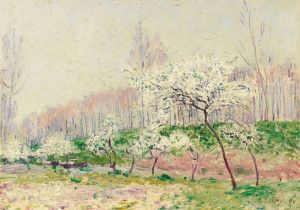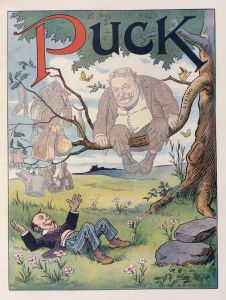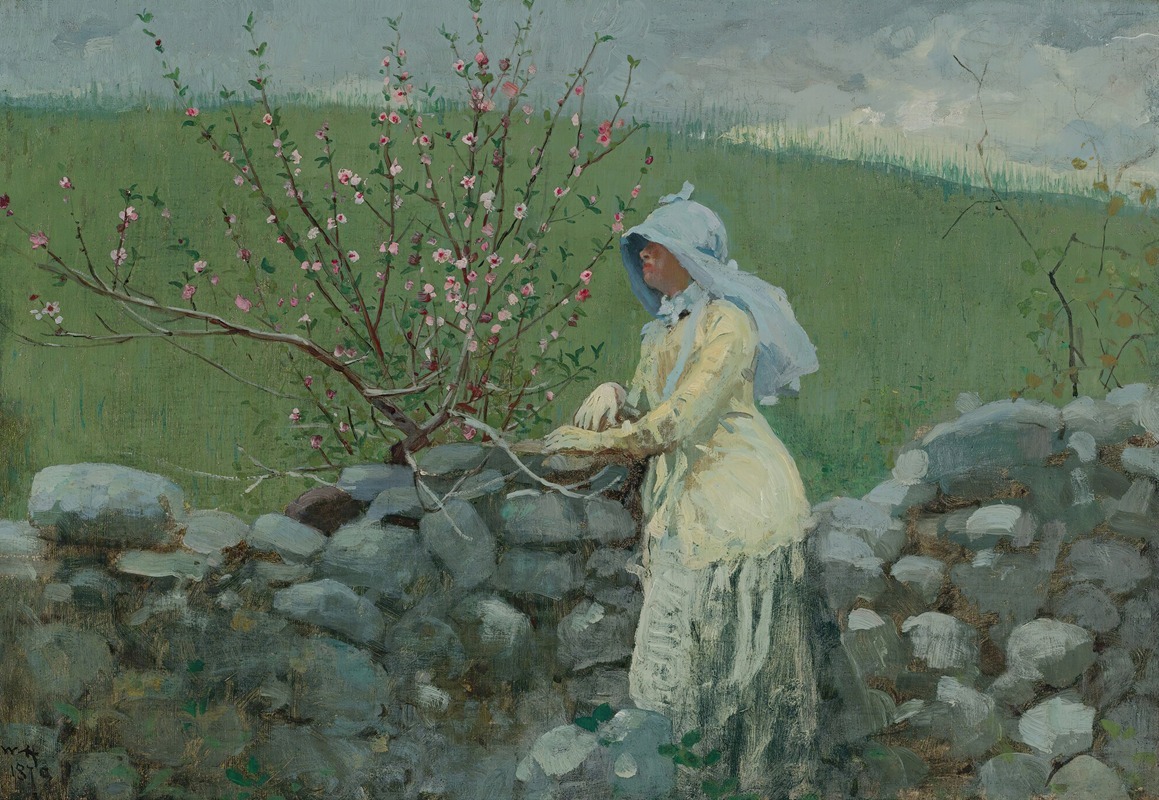
Peach Blossoms
A hand-painted replica of Winslow Homer’s masterpiece Peach Blossoms, meticulously crafted by professional artists to capture the true essence of the original. Each piece is created with museum-quality canvas and rare mineral pigments, carefully painted by experienced artists with delicate brushstrokes and rich, layered colors to perfectly recreate the texture of the original artwork. Unlike machine-printed reproductions, this hand-painted version brings the painting to life, infused with the artist’s emotions and skill in every stroke. Whether for personal collection or home decoration, it instantly elevates the artistic atmosphere of any space.
Winslow Homer, an American landscape painter and printmaker, is renowned for his marine subjects and depictions of American life. One of his works, "Peach Blossoms," exemplifies his skill in capturing the essence of the natural world and the subtleties of light and color. Painted in 1878, "Peach Blossoms" is an oil on canvas that reflects Homer's transition from his earlier career as an illustrator to a mature painter with a focus on realism and naturalism.
"Peach Blossoms" is notable for its portrayal of a young girl lying in a field surrounded by blooming peach trees. The painting captures the tranquility and innocence of childhood, a theme that Homer explored in several of his works during this period. The composition is balanced and serene, with the soft pinks of the peach blossoms contrasting against the lush greens of the grass and the girl's white dress. This use of color highlights Homer's ability to convey mood and atmosphere through his palette.
Homer's technique in "Peach Blossoms" demonstrates his mastery of light and shadow. The dappled sunlight filtering through the branches creates a play of light on the girl's face and the surrounding foliage, adding depth and dimension to the scene. This attention to detail is characteristic of Homer's work, as he often sought to capture the fleeting effects of light in nature.
The painting also reflects Homer's interest in the American landscape and rural life. During the late 19th century, America was undergoing significant social and economic changes, and artists like Homer were drawn to the simplicity and authenticity of rural settings. "Peach Blossoms" can be seen as a celebration of the beauty and tranquility of the American countryside, offering a respite from the rapid industrialization and urbanization of the time.
Homer's choice of subject matter in "Peach Blossoms" aligns with the broader artistic movement of realism, which sought to depict everyday life and ordinary people with truth and accuracy. By focusing on a simple, yet poignant moment in nature, Homer invites viewers to appreciate the quiet beauty of the world around them.
"Peach Blossoms" is part of the collection at the Metropolitan Museum of Art in New York City. The museum acquired the painting in 1911, and it has since been a part of numerous exhibitions showcasing Homer's work and the development of American art in the 19th century. The painting continues to be admired for its technical skill and its evocative portrayal of a peaceful moment in nature.
Winslow Homer's "Peach Blossoms" remains a significant work in the canon of American art, illustrating the artist's keen observation of the natural world and his ability to convey emotion through his brushwork. The painting is a testament to Homer's enduring legacy as one of America's foremost artists, whose works continue to resonate with audiences today.





